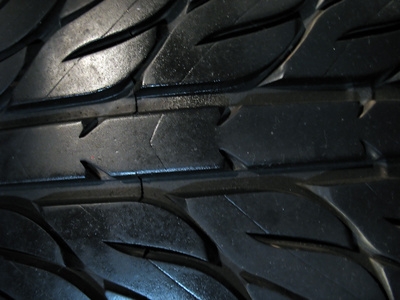
The journey that brought mankind from the wooden cart wheels used since the Roman era to pneumatic tires is indeed an epic one, spanning centuries of warfare, political strife and international intrigue. You could say that tires are made of rubber because it works, but even that is an oversimplification; modern tires can contain dozens of different compounds that can easily outweigh the amount of actual rubber in the tire. But it all goes back to a little known Portuguese colony in South America.
Portugal established its Brazilian outpost in the year 1500, but the colony lasted barely a century before one of Portugal's old nemeses set eyes on it. As of the early 1600s, the Vikings of the Netherlands had traded in their old religions and national identity to become the Christian Dutch but had never completely rid themselves of their expansionist tendencies. After 200 years of constant fighting with and undermining by the Dutch, Portugal finally pulled out of Brazil in 1831, leaving a 5-year old named Pedro in charge of the place.
Well aware that Portugal had left a toddler on the throne, Brazil's slaves rose up in the Male Revolt of 1835 to overthrow him. Lacking any significant infrastructure, the slaves afterward turned to the richest people around to lead them. These European rubber plantation owners did help to put the country back together but only after taking the slaves back in to brutally abuse them as indentured servants. Seeking customers to unload their new-found supply of cheap product, these "rubber barons" began exporting vast quantities of rubber to Europe.
This cheap, elastic substance was perfectly timed to help fuel Europe's industrialization. By 1871, German inventor and entrepreneur Karl Benz had discovered that wrapping thick cords of rubber around his Motorwagen's steel wheels could help it get better traction on Germany's cobblestone streets. Spurred on by the work of Andre Michelin in 1895, Benz and his successors started ordering larger, thicker cords with a hollow space in the middle, making for a much smoother and more controllable ride. Shortly afterward, manufacturers began producing cord in two parts: an inner portion that held pressurized air and a more durable outer shell with tread to grip the road. The pneumatic rubber tire was born.
As speeds increased on roads worldwide, manufacturers began to augment rubber's structure for increased performance. While vulcanized rubber (rubber with sulfur added to increase strength and durability) had always done a reasonably good job of sticking to the road, it would often grow hot and begin to degrade when subjected to sustained high speeds. Tire makers began adding fillers such as walnut shells, carbon black (a charcoallike substance made from petroleum) and later silica to help make the tire become stronger and "rougher" to better grip the road and resist wear.
Rubber's two basic qualities of mechanical adhesion (deforming to grip small imperfections in the road) and molecular adhesion (sticking to the road surface like glue) have been further enhanced by a number of compounds and structural changes. All new tires use an inner surface made of chemically modified holobutyl rubber, which has smaller pores to keep air in the tire. Most modern tires are composed primarily of carbon black, silica and organosilanes (basically silicone, which helps bond the carbon and silica together). The natural rubber that once made up the entire body of those original tires is now used as more of a medium to hold the main ingredients together. The average car tire is now only about 14 percent natural rubber by weight; good thing those brutal old rubber barons went into oil.